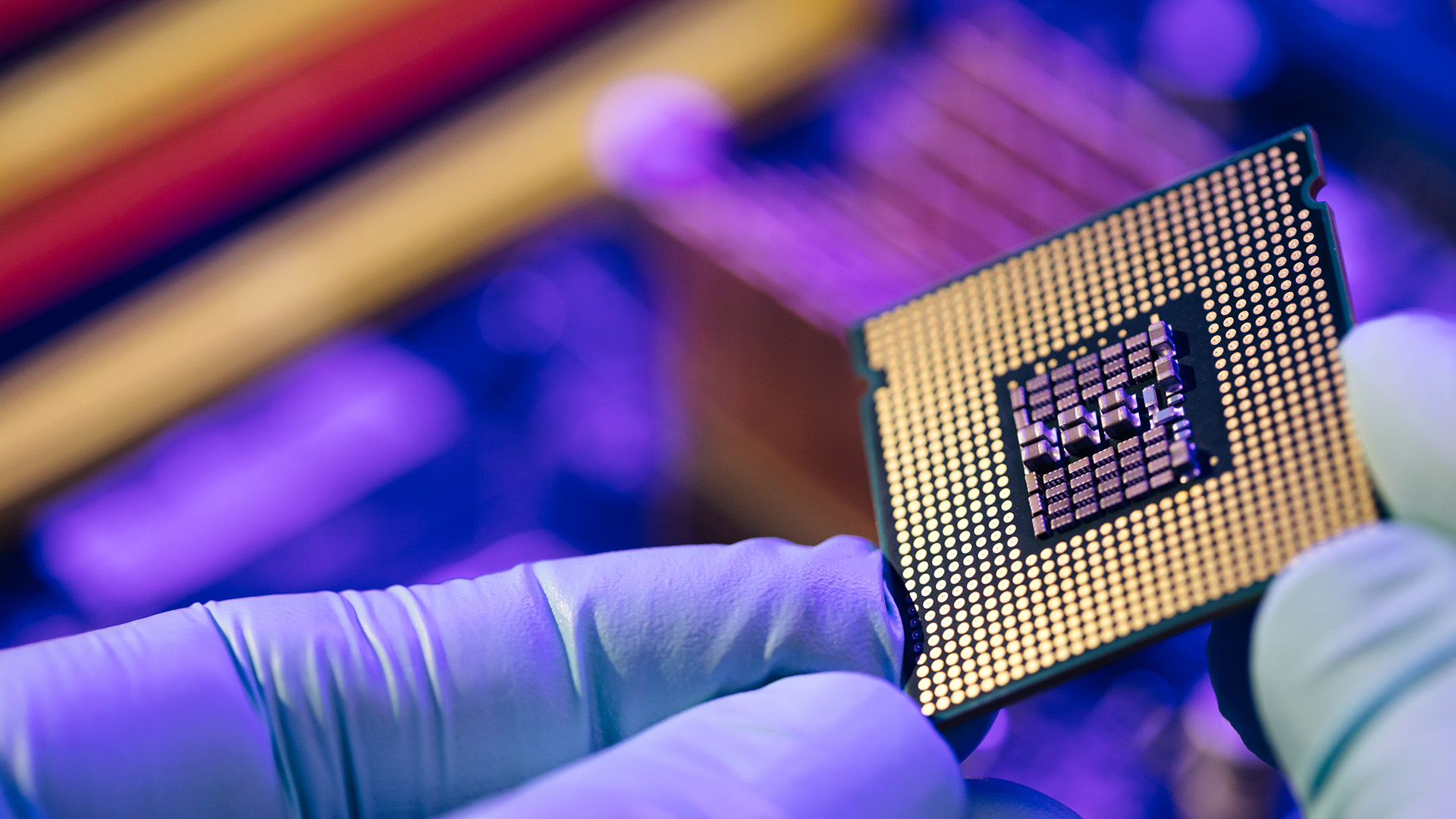The enactment of the European Chips Act by the European Union Council represents a significant pivot in the global technology landscape.
This European Chips Act is designed to bolster the EU’s share in worldwide chip production from its current standing at 10% to a target of 20%. To this end, an impressive capital allocation of €43bn has been set aside to subsidise various aspects of the semiconductor industry until 2030.
The Act’s broad-reaching implications include facilitating SMEs’ growth, enabling new semiconductor plant constructions across member states, spurring job creation, and regional economic development.
Furthermore, strategic investments by international tech giants such as Intel are expected within EU territories due to this legislative push. Introducing innovation and competence centres also forms part of this comprehensive approach to redefining global technology markets.
This article dissects the potential ramifications of the European Chips Act on these markets and examines its impact on economic strategy formulation, supply chain security enhancement, and alterations in competitive dynamics within the global tech industry.
Overview of the European Chips Act
The European Chips Act, approved by the EU Council on July 25th, 2023, serves as a key strategy in redefining the global technology markets, casting an ambitious vision to bolster the EU’s market share in chip production from a modest 10% to a substantial 20%.
It’s designed not only to boost large-scale semiconductor manufacturers but also to aid SMEs by effectively lowering entry costs into this highly competitive market.
The Act aims to build more semiconductor plants across Europe through attractive financial incentives, with companies like Intel already announcing plans for significant investment in new factories within the region.
The city of Magdeburg in Germany is set to benefit from such developments, with Intel’s proposed factory estimated to attract investment worth €33bn.
An element contributing significantly towards achieving this goal is the provision of subsidised and fast-track options for manufacturing expansion within the European Union territory.
While it addresses manufacturing capacity, it also acknowledges labour shortages affecting this sector. The plan includes investments into technical training programmes and the creation of competence centres to equip individuals with the necessary skills required in chip production industries.
This focus on human resources development will create job opportunities while supporting local communities and fostering regional economic growth.
Moreover, recognising that long-term competitiveness relies heavily on continuous innovation, part of the European Chips Act focuses on investing in innovation centres as well as start-ups operating within this field.
A budget allocation has been made under The Digital Europe Programme and Horizon Europe, which will receive around €15bn earmarked specifically for semiconductor-related research & development activities.
Such an initiative aligns perfectly with the EU’s broader economic strategy, relying heavily on technological integration and innovation, which is central to its internal objectives and its role as a capable partner in the global tech industry.

Global tech influence
Boosting semiconductor production within its borders positions the European Union to exert greater influence on international technology trends and standards.
The implications of increased EU influence in the technology sector are manifold:
- More control over technological norms: As the EU becomes a major player in chip design and manufacturing, it can set rules and standards that other players will need to adhere;
- Increased resilience: Localised chip production reduces dependency on foreign supply chains, enhancing economic stability;
- Innovation leadership: With investment into innovation centres and start-ups, the EU could lead breakthroughs in next-generation technologies;
- Enhanced competitiveness: A stronger presence in global tech markets allows Europe to compete with leading tech hubs such as Silicon Valley or Shenzhen; and
- Job creation: Expanding semiconductor plants across the continent will stimulate employment opportunities across various sectors.
Semiconductor infrastructure development
Infrastructure development acts as the deep roots that anchor and nourish the burgeoning semiconductor industry in Europe.
The European Chips Act’s key aim is not only to increase the EU’s global market share but also to establish a strong foundation for growth.
Infrastructure investments are part of this plan, including expanding production facilities and building new plants across member nations.
The implications of infrastructure development extend beyond physical spaces:
- It encourages foreign direct investment (FDI), attracting international players like Intel;
- It reduces dependency on Asian manufacturers, thus enhancing supply chain security;
- New factories mean more job opportunities, which can boost local economies;
- Increased manufacturing capacity could lead to reduced costs of electronic goods over time; and
- Technical training centres and competence centres address labour shortages by developing local talent.
Moreover, infrastructure expansion is not merely about constructing buildings; it includes investing in innovative start-ups and creating competence centres for technical training.
This holistic approach aims to create an ecosystem that fosters innovation while addressing labour shortages in the sector.
Moving forward, it becomes clear that infrastructure developments facilitated by the European Chips Act are pivotal for bolstering regional economies while supporting SMEs through lowered entry costs into the market.
By focusing on comprehensive infrastructural improvements – from manufacturing plants to innovation hubs – this Act ensures that Europe is well-positioned within the global technology markets both now and into the future.
Henceforth, these actions will likely make significant contributions towards making the EU a more capable partner in the global tech industry – all while fostering domestic growth and resilience.
Job creation and education
Undeniably, a surge in local semiconductor production will open doors to myriad employment opportunities, fostering economic resilience and infusing new vitality into regional communities.
The European Chips Act’s vision to amplify the EU’s footprint in chip manufacturing is projected to instigate significant job creation across the region. This expansion will not only cater to direct jobs within factories but also generate indirect employment opportunities in support sectors such as logistics, maintenance, and ancillary services.

Moreover, this Act could potentially stimulate growth in economically marginalised areas by attracting investment through financial incentives for semiconductor plant establishment.
The importance of equipping the workforce with requisite skills cannot be overstressed against this backdrop of industrial expansion.
An integral part of the European Chips Act strategy involves substantial investment in technical training programmes and competence centres aimed at addressing potential labour shortages.
These comprehensive strategies are expected to contribute meaningfully towards reducing dependency on non-EU nations for semiconductors while enhancing supply chain security.
It also aims at lowering costs associated with electronic goods production by promoting local sourcing. Moreover, these initiatives reflect an attempt by Ursula von der Leyen’s administration to embed technological integration deeper into the EU’s economic strategy.
The European Chips Act not only elevates the EU’s position in the global tech industry but also promises to transform regional economies by sparking employment growth and fostering a well-equipped, technologically competent workforce.
Driving innovation and research
In the realm of innovation and research, the new legislative measures present a unique opportunity to foster breakthroughs in semiconductor technology and propel the region toward technological self-reliance.
The European Chips Act provides a comprehensive framework for stimulating innovative efforts both in established corporations and emerging start-ups.
By creating an environment conducive to experimentation and progress, this legislation could pave the way for ground-breaking advancements that redefine our understanding of semiconductors.
The Act outlines several strategies aimed at bolstering innovation within the EU:
- Infusion of €15bn into Digital Europe Programme and Horizon Europe: This monetary stimulus is specifically allocated for semiconductor-related research and development, thereby nurturing an ecosystem poised to deliver cutting-edge technologies
- Development of Innovation Centres: The establishment of these centres serves as incubators for forward-thinking ideas, providing resources and expertise to transform theoretical concepts into practical solutions
- Support for Start-ups: A portion of funds from the Act is dedicated to assisting start-ups break into the industry, encouraging disruption and fostering competition that drives further innovation.
- Investment in Photolithography: As a world leader in photolithography machines vital for chip printing, additional investment will ensure continuous improvement in this critical area
Collectively, these initiatives make a compelling case for increased innovation within Europe’s semiconductor sector.
They strive to create an environment where creativity thrives, where risks can be taken confidently due to supportive policies, thus ensuring that potential breakthroughs do not go unrealised due to a lack of resources or funding.
The implications extend beyond merely enhancing capabilities within EU borders; they represent significant strides toward becoming a more formidable player on the global tech stage.
Strategic partnerships
Strategic alliances, as fostered under the new legislation, could potentially revolutionise the semiconductor industry and reshape geopolitical relationships in the tech realm.
The European Chips Act signals a shift towards increased cooperation between nations and players within the technology market. This move by the EU not only aims to strengthen its own position but also presents an opportunity for other countries to form strategic partnerships with it.

For instance, the United States is one of those potential partners that stand to gain from such arrangements; this alliance would help both entities decrease their dependence on Asian manufacturers for semiconductors.
The implementation of this Act can lead to a more balanced global distribution of chip production capabilities. With Europe’s share in chip manufacturing set to increase from 10% to 20%, there will be a significant shift in the power dynamics within this industry.
Strategic partnerships facilitated by this Act could result in better resource allocation across regions, thereby reducing vulnerability to supply chain disruptions.
From a business perspective, these strategic alliances may also encourage collaborations and joint ventures among companies across different regions.
Furthermore, SMEs benefit from lowered entry costs through subsidies provided by this Act, thus creating an environment conducive to cross-border collaborations.
At its core, beyond economic benefits and ensuring supply chain security, these strategic alliances bring about an exchange of knowledge that fosters innovation and competitiveness within the global technological landscape.
The European Chips Act marks a new chapter for Europe’s role in global tech markets, making it not only a more capable partner but also a significant influence on global technology trends and policies.









